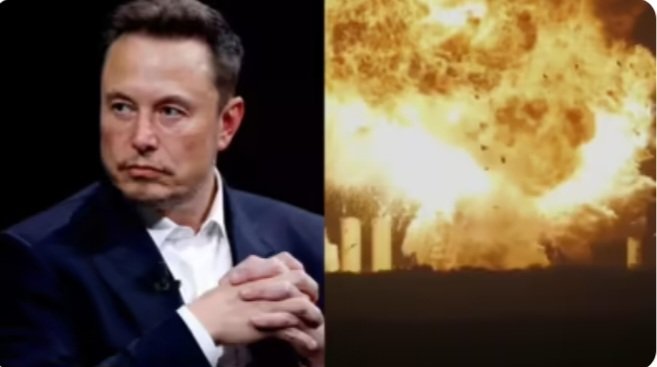In the most recent blow to the billionaire’s vision of transforming humanity into an interplanetary species, authorities in Texas reported that one of Elon Musk’s SpaceX Starships detonated during a routine test.
According to a Facebook post by Cameron County authorities, the Starship 36 experienced a “catastrophic failure and exploded” at the Starbase launch complex just after 11 p.m. on Wednesday (0400 GMT Thursday).
The message included a video that showed the megarocket hooked to the launch arm followed by a flash and a tall, flaming explosion.
Without providing further details, SpaceX stated that the rocket “experienced a major anomaly while on a test stand at Starbase” while it was getting ready for the tenth flight test.
“All employees are safe and accounted for, and a safety clear area was maintained around the site throughout the operation,” SpaceX also said on social media.
“While safety operations are ongoing, we ask that people refrain from attempting to approach the area as there are no risks to the residents of the surrounding communities.”
Authorities in Cameron County said that the Starship explosion happened during a “routine static fire test.”
To keep the Starship’s Super Heavy rocket from lifting off during the test firing, it would be moored to the ground during a static fire, which is a step in the preparations for a launch.
Musk’s space project headquarters are located at Starbase, which is close to the Texas-Mexico border.
The centerpiece of Musk’s long-term plan to colonize Mars, Starship is the biggest and most potent rocket in the world, standing at 123 meters (403 feet) high.
According to its marketing, the Starship is a completely reusable rocket that can carry up to 150 metric tons of cargo.
Over the Indian Ocean, a Starship prototype detonated at late
Instead of performing its scheduled splashdown in the Gulf of Mexico, the first-stage Super Heavy rocket exploded after the largest and most potent launch vehicle ever constructed lifted off from the Starbase site on May 27.
The upper stage disintegrated over the Caribbean on the prior two excursions, which also ended badly.
Musk’s space goals are unlikely to be significantly impacted by the setbacks.
The “fail fast, learn fast” philosophy that has allowed SpaceX to dominate commercial spaceflight has been a bet that it will eventually pay off.
In a bold engineering move that it believes is essential to quick reusability and cost reduction, the business has successfully captured the Super Heavy booster three times in the launch tower’s enormous robotic arms.
NASA is depending more and more on SpaceX, which transports humans to and from the ISS in its Dragon spacecraft.
In early May, the Federal Aviation Administration authorized a rise in the number of Starship rocket launches from five to twenty-five each year, claiming that the increased frequency will not have a negative environmental impact.
Conservation organizations protested that the expansion may jeopardize shorebirds and marine turtles, but the ruling dismissed their concerns.





